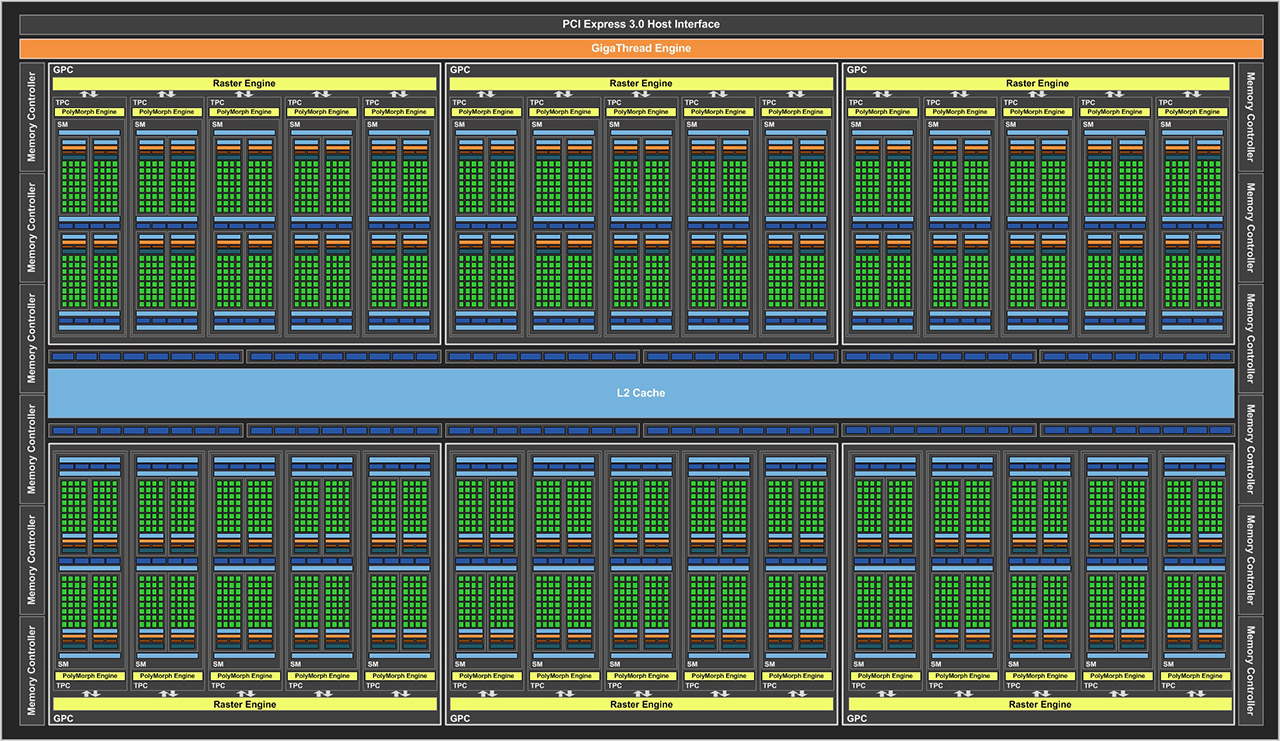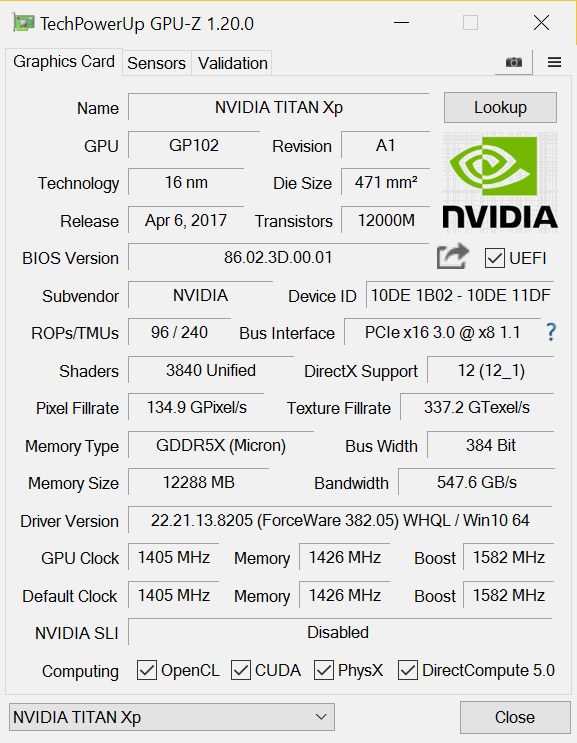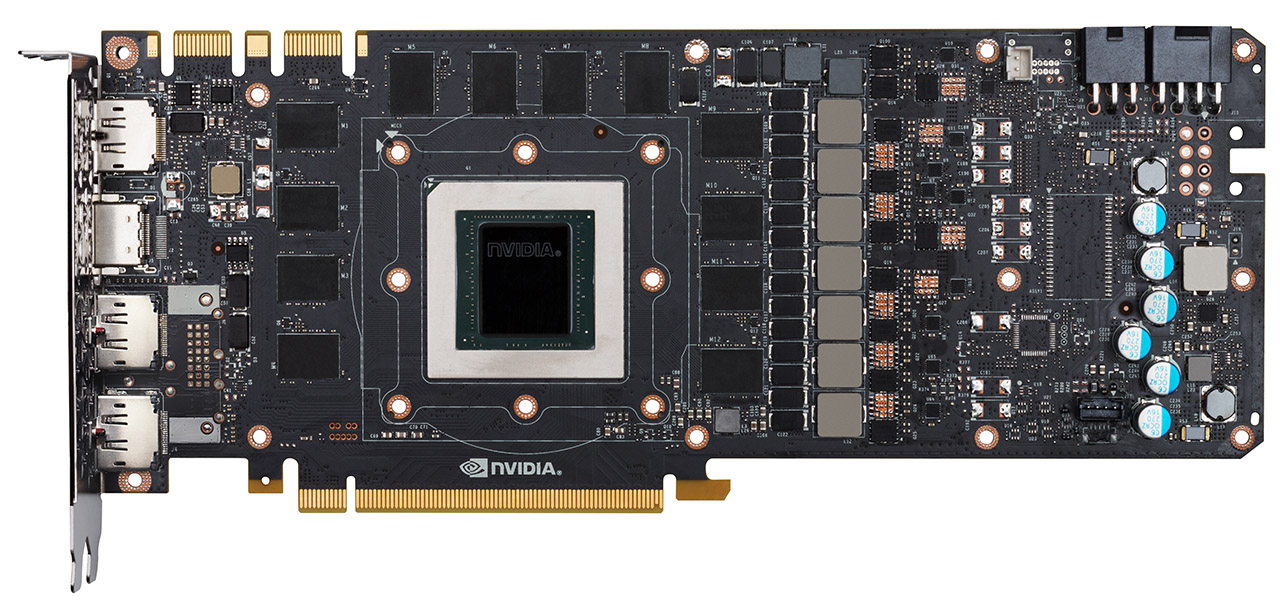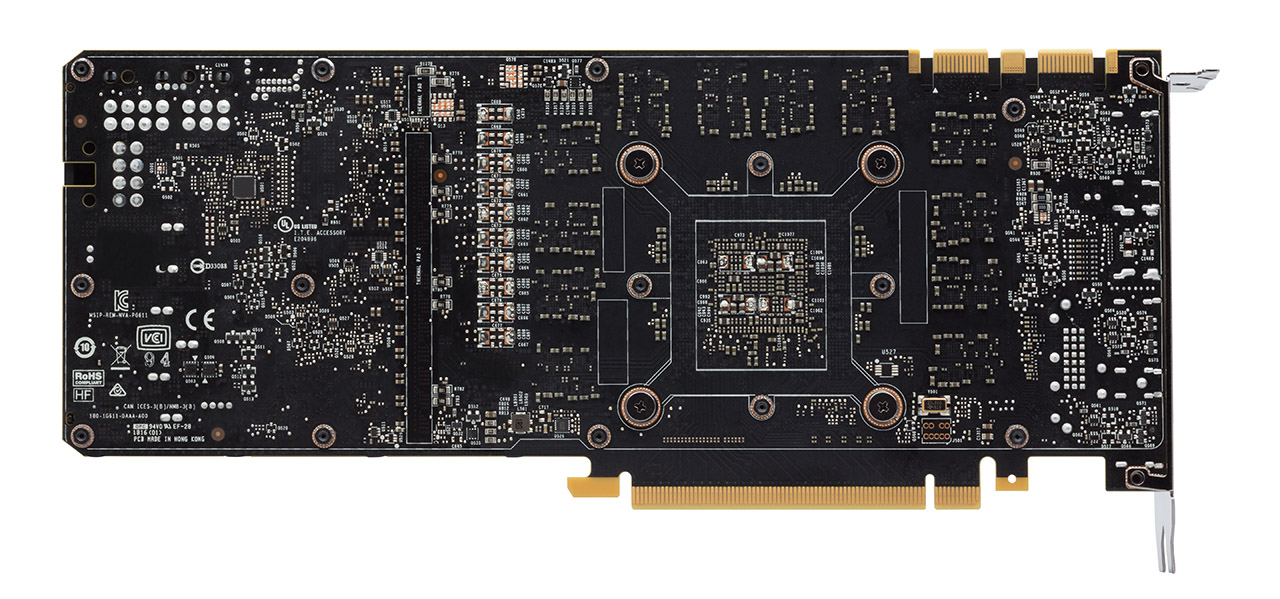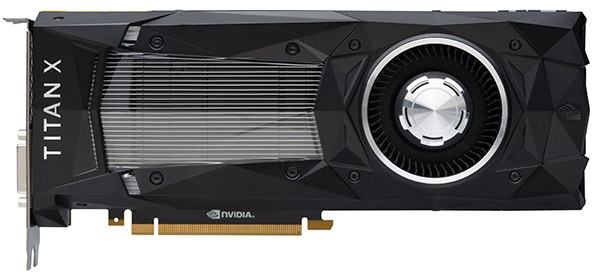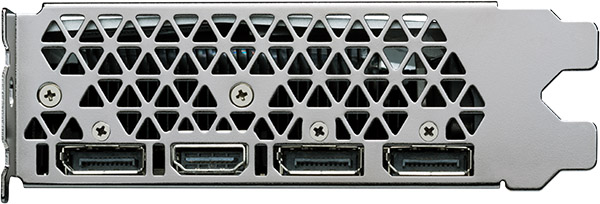Early Verdict
After launching a GeForce GTX 1080 Ti that was faster than Titan X, Nvidia reestablishes its Titan brand as the flagship using complete GP102 processors and overclocked GDDR5X memory. The resulting Titan Xp is indeed quicker. But at a $1200 price point, it still doesn't make much sense next to the $700 1080 Ti.
Pros
- +
Fastest single-GPU gaming card available
- +
Great-looking card
Cons
- -
Cooler pushed as far as possible
- -
Exorbitant price
- -
Looks the same as Titan X
Why you can trust Tom's Hardware
Titan Xp 12GB Review
Titan Xp recently replaced the Titan X atop Nvidia’s desktop graphics card hierarchy, correcting the strangeness of a $700 GeForce GTX 1080 Ti outperforming the company’s $1200 flagship. You’d think that would be another milestone to celebrate. But Nvidia announced the news quietly, curtly declining our request to take Titan Xp for a spin. The writing was on the wall, then: Titan Xp, still priced at $1200, assuredly wouldn’t serve up enough performance to tempt gamers away from the 1080 Ti. It was built to correct a discontinuity in Nvidia’s line-up.
And yet, we cannot help but wonder how much additional performance you get from a fully-enabled GP102 processor operating at a similar GPU Boost clock as 1080 Ti, coupled with 11 Gb/s GDDR5X memory overclocked even higher. So, like moths to a flame, we went out and bought ourselves a Titan Xp.
Specifications
Titan Xp, From The Inside
Up until now, Quadro P6000 was the only card based on a pristine GP102 processor. The previous-gen Titan X, also constructed around GP102, had two of its Streaming Multiprocessors disabled (for more on GP102, check out our Nvidia Titan X Pascal 12GB Review).
But as yields at TSMC improve, Nvidia has more fully-functional GPUs to go around. Titan Xp is a direct beneficiary of this. All 30 of the processor’s SMs are enabled, yielding 3840 CUDA cores and 240 texture units. Using the base clock rate to calculate compute performance, this gives Titan Xp an FP32 rate of roughly 10.8 TFLOPS (or 12.1 TFLOPS if you believe it can maintain its rated GPU Boost frequency though compute-intensive workloads). Unfortunately, with only four FP64 cores per SM, Titan Xp’s double-precision rate plummets to 337.2 MFLOPS at its base clock rate.
Like the Titan X before it, Titan Xp sports GP102’s complete back-end. All 12 of its 32-bit memory controllers are active, each bound to eight ROPs and 256KB of L2 cache. That adds up to 96 ROPs, 3MB of shared L2, and 12GB of GDDR5X.
| Header Cell - Column 0 | Titan Xp | Titan X (Pascal) | GeForce GTX 1080 Ti | GeForce GTX 1080 |
|---|---|---|---|---|
| Shader Units | 3840 | 3584 | 3584 | 2560 |
| ROPs | 96 | 96 | 88 | 64 |
| GPU | GP102 | GP102 | GP102 | GP104 |
| Transistors | 12 Billion | 12 Billion | 12 Billion | 7.2 Billion |
| Memory Size | 12GB GDDR5X | 12GB GDDR5X | 11GB GDDR5X | 8GB GDDR5X |
| Interface | 384-bit | 384-bit | 352-bit | 256-bit |
| GPU Boost Clock Rate (MHz) | 1585 | 1531 | 1582 | 1733 |
| Memory Clock Rate (MHz) | 1425 | 1250 | 1375 | 1250 |
Nvidia bolsters peak bandwidth compared to Titan X by populating GP102’s 384-bit memory interface with the same 11 Gb/s modules found on GeForce GTX 1080 Ti. The company even overclocks them slightly to 11.4 Gb/s, resulting in more than 547 GB/s of theoretical throughput (Titan X topped out at 480 GB/s; 1080 Ti nudged that up to 484 GB/s). After almost two years as the only gaming card to exceed 500 GB/s, AMD’s HBM-equipped Radeon R9 Fury X is eclipsed by Titan Xp.
Similar to the 1080 Ti, Titan Xp boasts a typical GPU Boost frequency of 1582 MHz. Its base clock rate, however, is a more conservative 1405 MHz, according to GPU-Z. That’s a bit lower than Titan X’s 1417 MHz and a larger dip compared to 1080 Ti’s 1480 MHz, likely reflecting Titan Xp’s larger pool of active resources.
Get Tom's Hardware's best news and in-depth reviews, straight to your inbox.
Titan Xp, Titan X, and GeForce GTX 1080 Ti all share the same layout. But whereas 1080 Ti’s PCB is fully populated, Titan Xp and Titan X utilize co-packaged high- and low-side MOSFETs from ON Semiconductor (NTMFD4C85N).
Also like Titan X, all 12 of Titan Xp’s memory emplacements are populated (vs. 1080 Ti’s 11).
A similar 250W board power calls for the same eight- and six-pin auxiliary power connectors, both of which face up, out of the card’s top. You can also see on the PCB where Quadro P6000’s eight-pin connector would attach, pointing straight back.
Titan Xp, From The Outside
If you were hoping for some sort of gussied-up exterior to show off that you spent $1200 on Nvidia’s latest and greatest, prepare for disappointment. Titan Xp is distinguishable from Titan X in exactly two ways. First, there’s a tiny sticker on the back plate with the card’s model. Second, Titan Xp sports the same I/O bracket as GeForce GTX 1080 Ti.
You get four display outputs, then, including three full-sized DisplayPort 1.2-certified interfaces (they’re DP 1.3/1.4-ready) and one HDMI 2.0b port. The original Titan X’s DVI connector is notably absent, facilitating more airflow through the bracket. Back when it launched 1080 Ti, Nvidia claimed the freer-flowing exhaust improved cooling and reduced noise. Our own Nvidia GeForce GTX 1080 Ti 11GB Review showed that card’s acoustic profile to be slightly different than Titan X, though not necessarily any better. Expect a similar experience from Titan Xp.
The good news for system builders is that any gaming PC designed to accommodate one of Nvidia’s Founders Edition boards will take the Titan Xp’s dimensions without a problem. The distance from the card’s slot cover to the end of its cooler spans 26.9cm. From the top of the motherboard slot to the top of the cooler, we measure 10.5cm. And with a depth of 3.5cm, Titan Xp fits nicely in a dual-slot form factor. Whereas our GeForce GTX 1080 Ti weighs in at 1039g, the Titan Xp’s 1072g is a bit heavier (matching the Titan X in our U.S. lab).
The external similarities between Titan X and Xp show a bit of laziness on Nvidia’s part. Despite the marketing department’s attempts to scrub gamer-oriented GeForce branding from this card’s name, there’s still a back-lit GeForce GTX logo on Titan Xp’s top edge. Further, Nvidia couldn’t be bothered to etch an extra ‘p’ on the shroud—it still reads Titan X.
MORE: Best Graphics Cards
MORE: Desktop GPU Performance Hierarchy Table
MORE: All Graphics Content
Current page: Titan Xp 12GB Review
Next Page How We Tested Nvidia’s Titan Xp 12GB-
With this card Nvidia completed the current generation of their graphic chips. They are onto new one...the best company out there.Reply
-
TMTOWTSAC GPU makers are really going to have to hope QHD, 4k, machine learning, and VR really take off within the next 4 years.Reply -
dstarr3 Meet the new boss, same as the old boss. If all you need a GPU for is gaming, go one step down, save hundreds of dollars, at the cost of only a handful of FPS.Reply -
AgentLozen ReplyFreak777power said:With this card Nvidia completed the current generation of their graphic chips. They are onto new one...the best company out there.
I was thinking something similar while I was reading this. The Titan Xp represents the very furthest that the Pascal architecture can go. This current crop of cards from the 1050 to the Titan Xp will carry us to Volta's launch.
(wait, isn't there a card even smaller than the 1050? /shrug)
Edit: Why isn't this quote working?
Edit2: Figured it out =) -
AndrewJacksonZA "The Titan Xp represents the very furthest that the Pascal architecture can go. This current crop of cards from the 1050 to the Titan Xp will carry us to Volta's launch."Reply
I have to agree. Even though I don't like them as a company due to some of their business practices, I have to give them credit for being a stylish company that really pushes it and completes their line-ups - I like things to be *complete*... :-) -
AndrewJacksonZA Thanks for putting in the effort for this review, Chris! Appreciate your contributions around here. :-)Reply -
bentonsl_2010 Reply(wait, isn't there a card even smaller than the 1050? /shrug)
I believe you are talking about the 1030. This isn't really a gaming card however, it's more geared for e-sports streaming and HTPC type builds. -
hannibal Could you test this card with a water block?Reply
This seems to be monster that would really benefit from that... -
barryv88 $500 for a measly increase over the Ti. Add another $200 premium that Gsync screens cost over Freesync ones, and you've happily payed +- $700 Nvidia tax for the "New coolest kid on the block" title.Reply
Yeaaaa. Thanks, but no thanks! -
AgentLozen Replybarryv88 said:$500 for a measly increase over the Ti. Add another $200 premium that Gsync screens cost over Freesync ones, and you've happily payed +- $700 Nvidia tax for the "New coolest kid on the block" title.
Yeaaaa. Thanks, but no thanks!
You know if someone handed you a Titan Xp you would stick it right in your box without a second though.
bentonsl2010 said:I believe you are talking about the 1030. This isn't really a gaming card however, it's more geared for e-sports streaming and HTPC type builds.
Yes. That's the one.
I mentioned it to illustrate that nVidia has a very wide portfolio with something for everyone. Pascal has been a terrific generation for nVidia.
